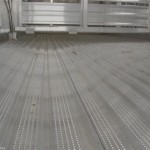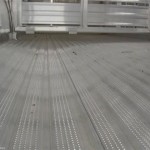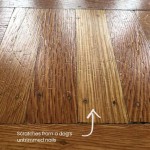How Much Is Labor To Install Ceramic Tile Flooring?
Installing ceramic tile flooring can dramatically enhance the aesthetic appeal and functionality of any space. Understanding the costs involved is crucial for effective budgeting. While the price of the tiles themselves is a significant factor, the labor cost constitutes a considerable portion of the overall expense. This article delves into the factors influencing the labor cost for ceramic tile installation, providing a comprehensive overview to assist in informed decision-making.
The labor cost for ceramic tile installation is typically calculated on a per-square-foot basis. However, the actual price can vary widely depending on a multitude of factors, including the complexity of the installation, the geographical location, the experience level of the installer, and the specific characteristics of the subfloor. Understanding these variables allows for a more accurate estimation of the potential costs.
Key Point 1: Factors Influencing Labor Costs
Several key factors can influence the labor costs associated with ceramic tile installation. These elements contribute to the overall complexity and time required for the project, directly impacting the price quoted by installers.
Size and Layout of the Area: The size of the area to be tiled is a primary determinant of labor costs. Naturally, larger areas require more time and materials, leading to higher labor charges. The layout's complexity also plays a significant role. Rooms with numerous corners, curves, or intricate patterns demand more precise cutting and fitting, increasing the installer's workload and, consequently, the cost.
Tile Size and Type: The size and type of ceramic tiles themselves influence installation labor costs. Smaller tiles, such as mosaics, require significantly more time and precision to install compared to larger format tiles. Different tile types, such as porcelain (a denser and more durable form of ceramic), may also require specialized cutting tools and techniques, potentially increasing labor costs.
Subfloor Preparation: The condition of the subfloor is a critical factor affecting the ease and cost of tile installation. An uneven, damaged, or improperly prepared subfloor requires additional work to ensure a level and stable surface for the tiles. This may involve leveling compounds, patching cracks, or even replacing sections of the subfloor entirely. Such preparatory work adds to the overall labor cost.
Complexity of the Design: Simple, straightforward tile layouts are generally less expensive to install than intricate designs. Patterns such as herringbone, diagonal, or complex geometric arrangements require more cutting, fitting, and attention to detail, thus increasing the labor cost. Custom designs or the incorporation of decorative elements further contribute to the complexity and expense.
Grout Type and Application: The choice of grout and the method of application can also impact labor costs. Specialized grout types, such as epoxy grout, may require specific mixing and application techniques, potentially increasing the installer's time and expertise. Wider grout lines often necessitate more grout and a more meticulous application process.
Demolition and Removal of Existing Flooring: If existing flooring needs to be removed before tile installation, this will add to the overall labor costs. Removing old tile, vinyl, or carpet can be a time-consuming and labor-intensive process, particularly if the existing flooring is difficult to remove or if the subfloor is damaged in the process.
Waste Disposal: The removal and disposal of old flooring and tile scraps can also contribute to the overall cost. Some installers include waste disposal in their labor quote, while others may charge separately for this service.
Key Point 2: Regional Variations in Labor Costs
Labor costs for ceramic tile installation can vary significantly depending on the geographical location. These variations are influenced by factors such as the local cost of living, the demand for skilled labor, and the prevailing wage rates in the area.
Cost of Living: Areas with a higher cost of living, such as major metropolitan cities, typically have higher labor costs for all types of home improvement projects, including tile installation. The increased cost of housing, transportation, and other necessities in these areas translates to higher wages for skilled tradespeople.
Demand for Skilled Labor: The demand for skilled tile installers can also impact labor costs. In areas where there is a shortage of qualified installers, prices may be higher due to increased competition for their services. Conversely, in areas with a surplus of installers, prices may be more competitive.
Prevailing Wage Rates: Local prevailing wage rates for construction workers, including tile installers, influence the overall labor costs. These rates are often determined by union agreements, government regulations, and market forces.
Geographic Location and Season: Certain geographic regions experience seasonal fluctuations in construction activity. For instance, colder climates may see a slowdown in outdoor projects during winter, potentially impacting the availability and pricing of tile installers.
Local Building Codes and Permits: Compliance with local building codes and the requirement for permits can indirectly influence labor costs. Installers may need to factor in the time and expense of obtaining necessary permits and ensuring that the installation meets all applicable code requirements.
Due to these variations, it's imperative to obtain multiple quotes from local installers to get an accurate understanding of the prevailing labor costs in a specific region.
Key Point 3: Hiring a Tile Installer: Experience and Credentials
The experience and credentials of the tile installer significantly impact the quality of the installation and, consequently, the overall cost. While hiring a less experienced installer may result in lower initial labor costs, the potential for errors, rework, and long-term maintenance issues can ultimately outweigh the savings.
Experience Level: An experienced tile installer possesses the skills, knowledge, and expertise to handle a wide range of tile installation challenges. They are familiar with different tile types, installation techniques, and subfloor preparation methods. Experienced installers are also more likely to identify potential problems early on and offer effective solutions, minimizing the risk of costly mistakes.
Licensing and Insurance: Hiring a licensed and insured tile installer provides important protection for the homeowner. Licensing ensures that the installer has met certain competency standards and is operating legally. Insurance protects the homeowner from liability in case of accidents, injuries, or property damage during the installation process.
Certifications: While not always required, certifications from industry organizations can further demonstrate an installer's commitment to quality and professionalism. Certifications often involve specialized training and testing, ensuring that the installer is up-to-date on the latest techniques and best practices.
References and Portfolio: Requesting references from previous clients and reviewing an installer's portfolio provides valuable insights into their workmanship and customer service. Contacting references allows homeowners to gather first-hand feedback on the installer's reliability, professionalism, and attention to detail.
Estimates and Contracts: A reputable tile installer will provide a detailed written estimate outlining the scope of work, materials costs, and labor charges. A formal contract should clearly define the terms and conditions of the agreement, including payment schedule, warranty information, and dispute resolution procedures. Avoid installers who provide only verbal estimates or are unwilling to sign a written contract.
Communication and Collaboration: Effective communication and collaboration between the homeowner and the tile installer are essential for a successful project. A good installer will listen to the homeowner's needs and preferences, provide clear explanations, and keep them informed throughout the installation process.
Choosing a qualified and experienced tile installer is an investment in the long-term quality and durability of the ceramic tile flooring. While labor costs may be higher upfront, the peace of mind and assurance of a properly installed floor outweigh the potential risks associated with hiring an inexperienced or unqualified installer.
Ultimately, determining the labor cost to install ceramic tile flooring involves a careful consideration of various factors, including project complexity, geographical location, and installer experience. Thorough research, obtaining multiple quotes, and scrutinizing credentials are crucial steps to ensure a fair price and a satisfying outcome.

Fixr Com Ceramic Tile Flooring Installation Cost

Ceramic Tile Installation Costs In 2024 Forbes Home

Fixr Com Ceramic Tile Flooring Installation Cost

How Much Does Ceramic Tile Installation Cost 2024

What Is The Average Cost To Install Tile Floors Rubi Blog Usa

Fixr Com Ceramic Tile Flooring Installation Cost

Fixr Com Ceramic Tile Flooring Installation Cost

2024 Ceramic Tile Installation Cost A Complete Guide Angi

Fixr Com Tile Flooring Installation Cost Floor S

How Much Does It Cost To Install Or Replace Tile Homeserve Usa
Related Posts








